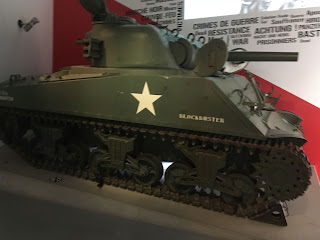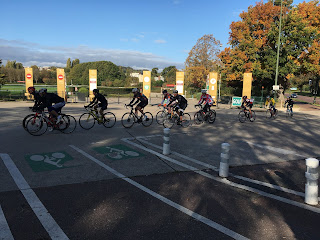On 10 November 2003 the crew of Chinook helicopter
Yankee 2-6 made this landing on a cliff in Afghanistan.
Artist Larry Selman immortalized the event in a limited-edition print.
When I deployed to Iraq in 2009 with an Army helicopter
brigade, nearly all the soldiers in our unit and every other unit were younger
than me—a generation younger than me. But not the pilots. Some were young, but many more were in their
40s and 50s. Larry Murphy, a Chinook
helicopter pilot, was one of the very few soldiers older than I was. I was 56. He was 58.
On Wednesday, 5 September 2019, Larry was honored with
the unveiling of a painting commemorating an amazing bit of flying he and his
crew did in Afghanistan in 2003. Larry
was deployed with a company of Chinooks and supporting equipment to
Afghanistan. The tour was supposed to be a year and was extended to 16 months.
The Chinook company was made up of soldiers from the Pennsylvania and
Connecticut Army National Guard did not leave Afghanistan till 2004. They were in
support of several companies of soldiers from the 10th Mountain
Division, Fort Drum, New York.
On 10 November 2003, Larry and the crew of Chinook
helicopter Yankee 2-6 received an additional mission to pickup prisoners while
they were on a resupply mission. These missions are a routine part of combat
operations in Afghanistan. But this
mission was different. The prisoners had to be picked up from the side of a steep
mountain at an elevation of 8,500 feet above sea level. There was no place to land an aircraft with a
52-foot-long fuselage that is almost 100 feet long from tip to tip of its
massive twin rotors.
The pickup point was a shack on the side of a cliff. Larry and the crew landed rear-wheels-only on
the roof of the shack with the tail ramp lowered. With the back of the helicopter on the shack
roof, Larry and the other pilot, Paul Barnes, could not see the shack or any
other close-in visual markers. From the cockpit, the pilots could see down the
cliff to the valley 2,500-feet below.
The flight engineer James Duggan, crew chief Brian Kilburn and door
gunner Margaret Haydock guided the pilots from the side and rear of the
aircraft.
Although technically a landing
in the sense that the rear wheels were on the ground, the pilots were carefully
keeping the full weight of the 25,000-pound (empty) helicopter from resting on
shack, and keeping the front of the helicopter stable and level while the
prisoners were brought aboard.
As soon as the prisoners were on board, the big
helicopter returned to base.
Five years ago, I was in a Chinook helicopter on Fort
Indiantown Gap that landed rear-wheels-only on a cliff. Twenty soldiers in full battle gear ran off
the ramp and set up a security perimeter.
As the soldiers left the aircraft with their gear and heavy weapons, the
weight of the aircraft dropped by 6,000 pounds, but the pilots held the
helicopter level and steady. I was
looking out the door gunner’s window near the front of the aircraft. I saw
nothing but sky above and rock-strewn valley hundreds of feet below. I had heard about the roof landing since I
joined the unit in 2007. It is amazing to see. It is more amazing to feel.
Larry Murphy signing prints at the Aviation Armory on
Fort Indiantown, Pennsylvania
The print by artist Larry Selman is available on
his website.
In the years since the landing, the photo (above) has become an iconic image for Army Aviation, so much so that people question if the landing really happened.
Snopes.com answered the question: True. From
their site:
I’m sure all of you have seen many choppers make some daring moves, but this one is spectacular. Hope you enjoy it. This attached shot was taken by a trooper in Afghanistan. Pilot is Larry Murphy, PA National Guard. Larry is a Keystone Helicopter Corp. EMS Pilot employee called to active duty. I must state that this is a “unique” landing operation. I understand that this particular military operation was to round up suspects.
We have some super reservists and National Guard folks out there in addition to our volunteer troops. God bless them all.



























